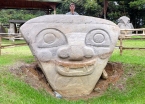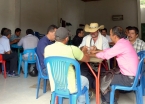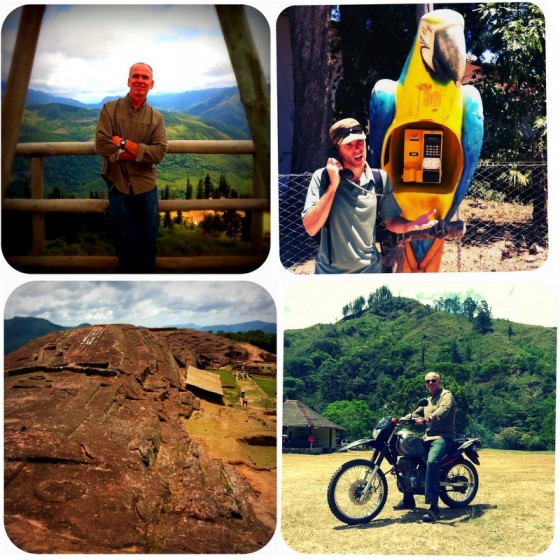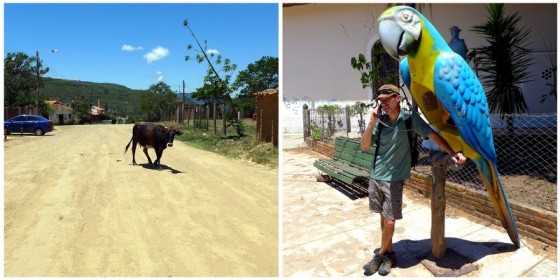
I had no intention of visiting San Agustín and Tierradentro. But after perusing the information wall at the excellent Hosteltrail.com hostel, the Colombian Heritage Circuit struck me as the perfect four-day getaway to an interesting and not-very-visited part of the country.
This is an area that only recently opened to tourists. Long the domain of leftist People’s Army, a.k.a. FARC guerrillas (Fuerzas Armadas Revolucionarias de Colombia), the Colombian army has succeeded in pushing anti-government forces out. While I felt safe in my travels so far in Colombia, my current guidebook (published only months prior) still had intriguing warnings on specific routes:
You should not travel after dark, not because of guerrilla activity but rather due to late-night bandits…
I asked several locals in Popayán and no one seemed to think the area or the journey were all that risky. So off I went, during daylight hours of course.
San Agustín and Tierradentro are the sole UNESCO World Heritage architectural sites in Colombia, important reminders of the ancient culture of southern Colombia that dates from 4000 BC when settlers established agricultural communities and thriving trade connections.
Unfortunately little is known about this civilization. But hundreds of unearthed statues remain, beautifully sculpted from volcanic rock, represent humans, sacred animals and even fantastical monsters. Today these are viewed atop panoramic altos (hilltop burial grounds) overlooking emerald forests.
I arrived safely to San Agustín town after an uneventful (yet bumpy) bus ride through the sparsely populated Andean hills. I did see armed Colombian soldiers patrolling the roads but the only apparent threat were the hairpin turns on unpaved roads that teetered above steep chasms.
San Agustín is a boom town, more bustling than I expected. Tourism is set to take off with newly-arrived expats opening traveler-oriented businesses. I was greeted warmly at the flashpacker-chic Bambú Hostal where I spent a couple comfortable and undisturbed nights. Cheery Dionisio, the jazz-playing Argentine hipster who owns the hotel, pointed me to the remarkably tasty Tomate Verde, a healthy vegetarian restaurant run by a gifted German cook.
Continue reading “Unearthing Colombia’s Ancients in San Agustín and Tierradentro”
















